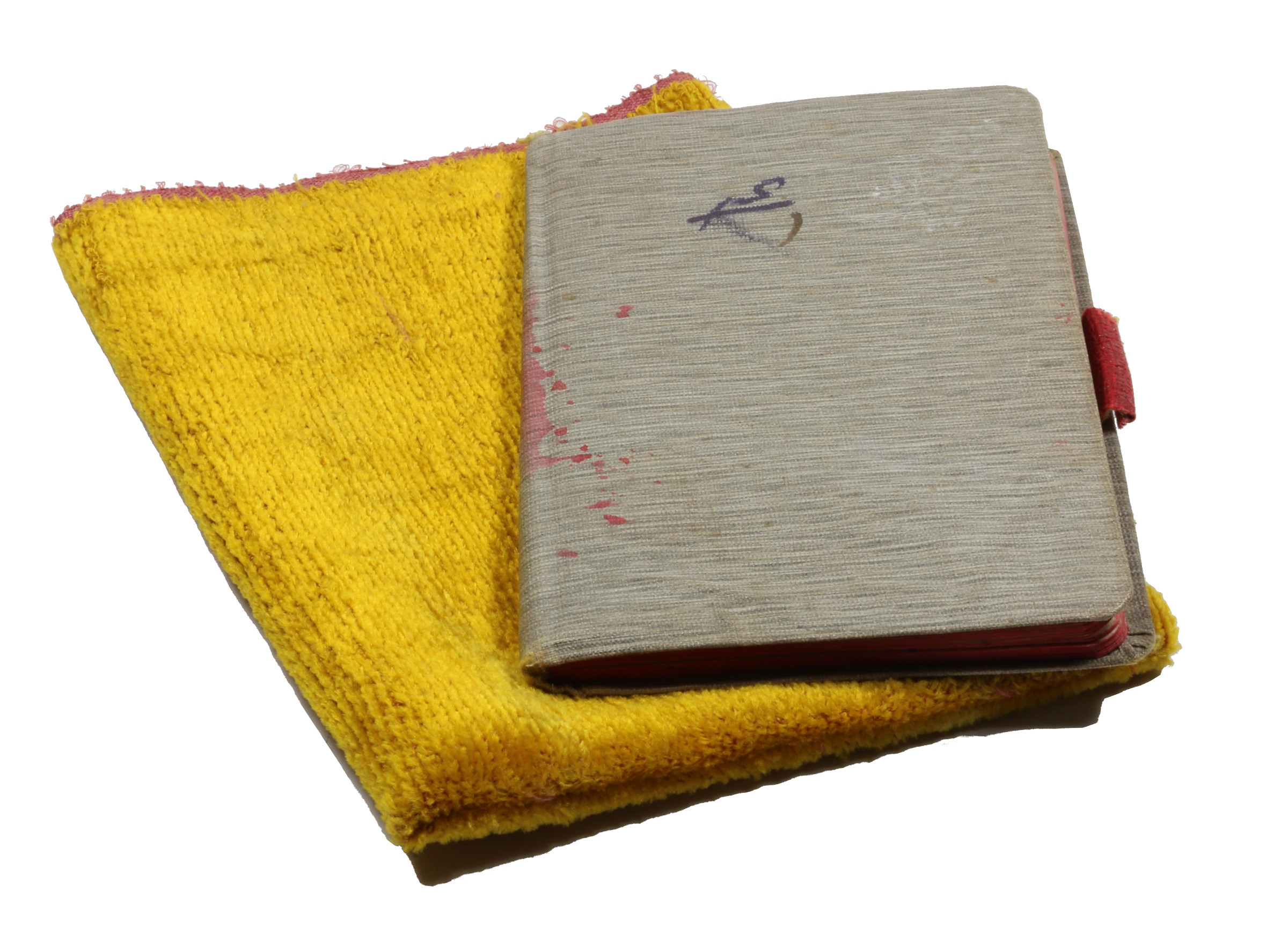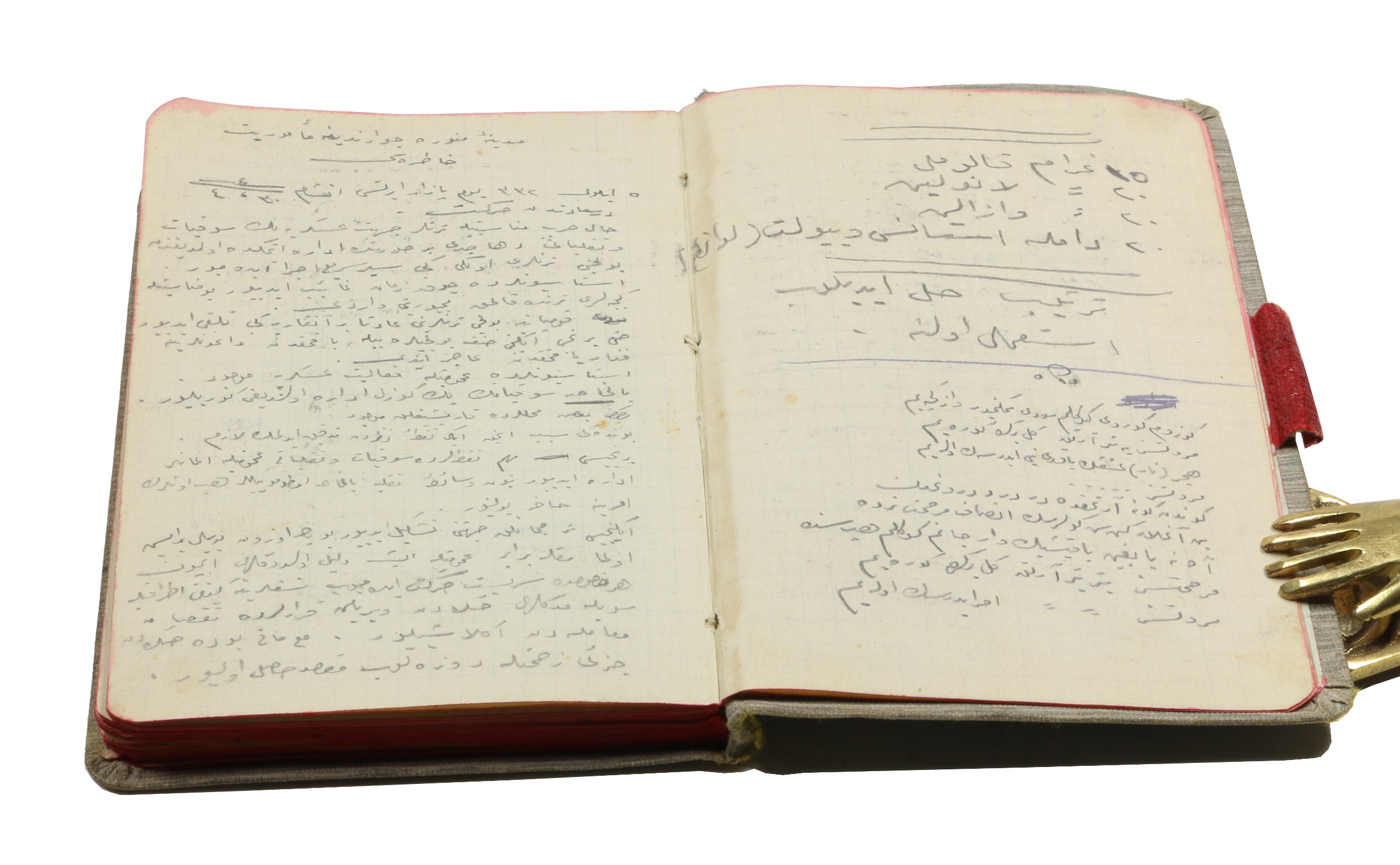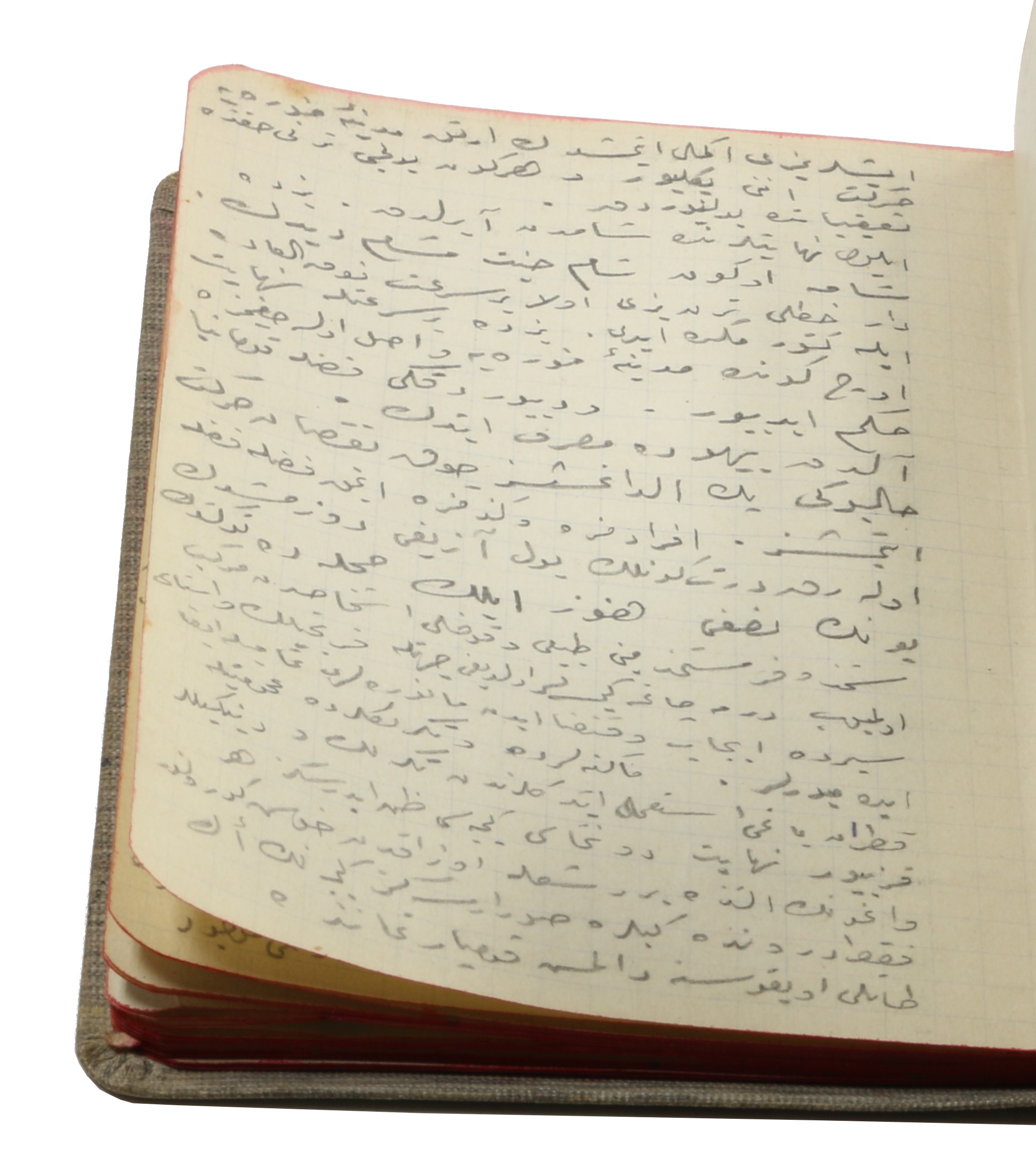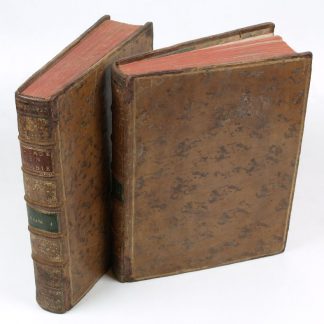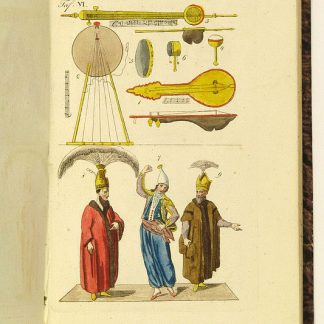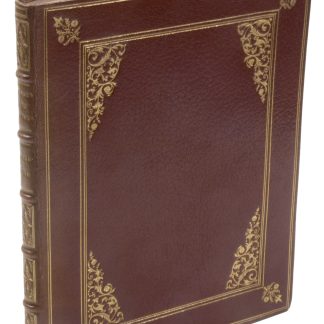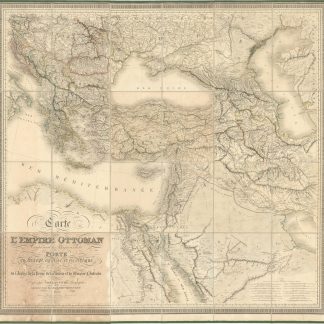[SOLD]
This item has sold. We are always interested in acquiring another copy or any item of comparable quality.
To Medina by the Hejaz Railway: the Middle Eastern travel diary of an Ottoman military officer during the Arab Revolt
Medine-i Münevvere Civarlarina Memuriyet Hatirasi [Memoirs of public service around al-Madinah al-Munawwarah].
12mo (85 x 132 mm). Ottoman Turkish manuscript in Ruq'ah script, mostly pencil on squared paper, ca 24 lines, with additional notes on endpapers. 40 written pp. on 54 ff., with another 11 pp. of calculations at the end of the volume. Contemporary full cloth notebook with red pen-sheath. All edges red. Stored in a yellow velvet pouch.
A fascinating travel manuscript detailing an Ottoman officer's mission to Medina at the height of the First World War, coinciding with the Arab Revolt when Hussein, Sharif of Mecca, fought to expel the Ottoman Empire from Arabia.
Ali Riza, an officer of the engineer corps based in Istanbul, was detailed to the Hejaz on an unstated special assignment probably related to cartography in the autumn of 1916, at a time when the British-backed Arab forces were closing in on Taif, east of Mecca. In a delegation of five, also including Selahaddin, Fethi, Hafiz Ismail and Sadik Effendis, he departed Istanbul on September 18, travelling by the modern Ottoman railway network as well as sometimes by motorcar to Tarsus and Adana, then on to Osmaniye, Islahiye, and Aleppo, southward to Damascus, and finally to Medina, reached via the Hejaz Railway within six strenuous days and nights.
The journal provides many valuable political observations that show the author's discomfort with the growing influence of the Allied German military personnel, who do not conceal their disdain for Ottoman officers. He chafes at a road at the Çamalan station being named "Emperor Wilhelm Street" and notes with dismay the French and British influence in Aleppo. Yet Ali also extensively discusses the people of the region, their culture, the geography and local architecture. In Damascus, reached during Eid al-Adha, he describes the Umayyad Mosque and its surroundings. He writes that the people of Damascus are intelligent and cunning but use their talents for "fraud and the devil". Men are said to be very religious, the women sociable, but in their faces he finds written the idea of independence. The journal praises the administrative capabilities of the governor Cemal Pasha, a leader the Young Turks, and mentions the presence of the Mevlevi Regiment.
Owing to war conditions, the journey was exhausting (Ali complains of disruptions at the stations and frequent breakdowns of the trains), and the final six-day leg from from Damascus to Medina must have been particularly taxing. Ali notes the many uninhabited stations in Arabia and how the climate affects his health. As the train was fired with wood rather than coal, it could not travel at full speed; the burning winds and maddening flies of the desert further vexed the passengers. Future travellers are advised: "You should know enough Arabic to express yourself. Also, cigarettes are very bad here. Bring your own or quit smoking".
Medina is described as a "very pretty city", but "the general architecture is not in the usual Arabic style. It was built by Arab architects, but in general everyone has attractive buildings and shops made from mudbrick, stone, and palm branches, according to the requirements of the climate." Al-Masjid an-Nabawi was visited, and the Quba Mosque, its various sites and their importance for Islam are described in detail. Further, the book provides details on the water supplies of Medina: "Despite the severity of the heat, God has given this city so much water that wherever you dig, you will find excellent fresh water at a depth of a few metres. Therefore, there are many wells. There are also special jugs that are from the soil of this place, called Sherbe. After an hour any water put in these jugs becomes so cold that you cannot drink it at once. Nowhere else in the world will a jug made of such hot earth cool the water so much." Additional information is provided about the dates of Medina and about the volcanic basalt of the region, known as Harra. Mecca was not visited since the holy city had been captured by Arab forces in July, while Hussein would not succeed in wresting Medina from the Ottomans until 1919.
The notebook reveals Ali Riza as not only an observant officer, but also as a literary man who is fluent in descriptive travel writing as well as in poetry, and capable of quoting from the famous Turkish poet Namik Kemal. Assumedly he leaned toward the Young Turks, and his thoughts reflect the typical Ottoman officer of his time. His unpublished journal contains many unique observations made on a military mission to the heart of the Hejaz at a critical moment in Ottoman history.
Cf. Murat Özyüksel, The Hejaz Railway and the Ottoman Empire: Modernity, Industrialisation, and Ottoman Decline (transl. by Sezin Tekin, London, 2014).

